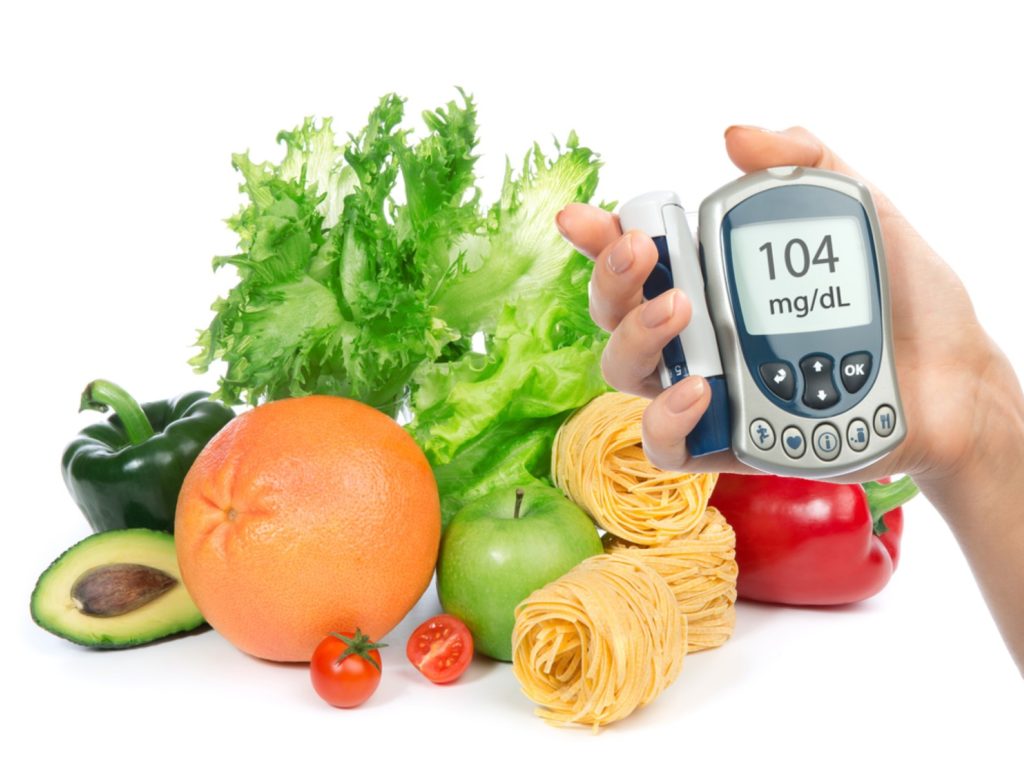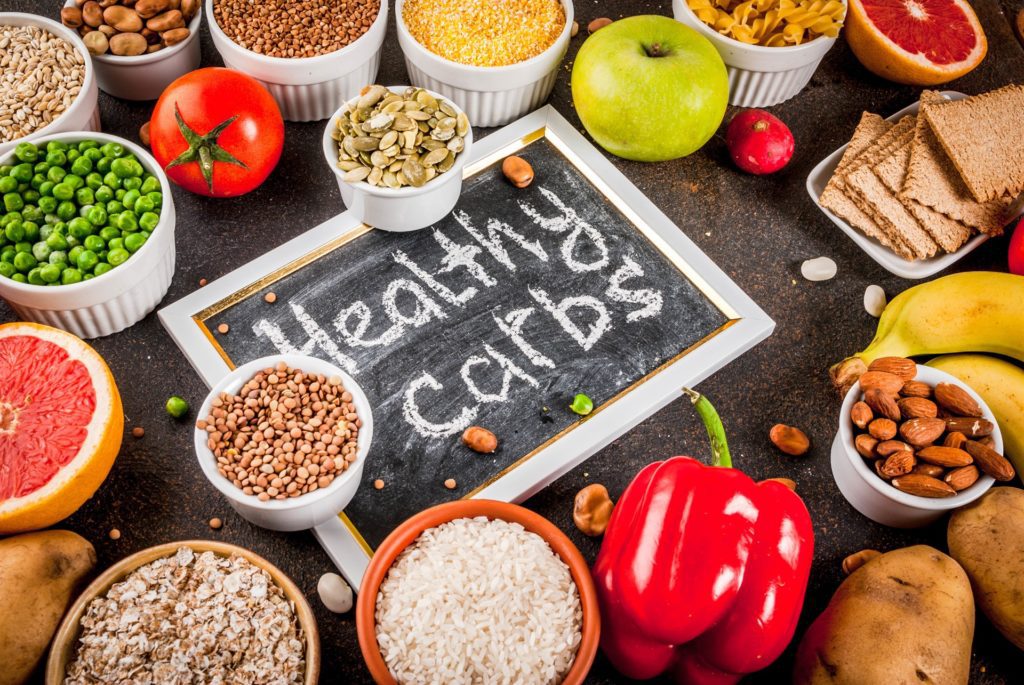In today’s time diabetes is a serious public health issue, which now needs the action of all health professionals and individuals to combat.
Diabetes mellitus is a metabolic disorder characterized by high blood glucose levels. This is due to a decreased ability or complete inability of the body tissues to utilize carbohydrates along with the metabolism of fat, protein, water, and electrolytes.
It has been studied that Indians are more susceptible to diabetes than any other ethnic groups and the prevalence is increasing day by day. Therefore, it is vital to have knowledge about the role of carbohydrates in the management of diabetes as it is the one that influences blood glucose the most.

Dietary changes and nutritional management stand the most important. Proper nutritional management can provide long term health and quality of life.
Key components of diabetes management include
- Healthful eating pattern,
- Regular physical activity, and
- Medications to avoid complications.
For a lot of diabetic patients, the most challenging part is to decide what to eat. But, one should stop worrying about it as living with diabetes doesn’t have to mean feeling deprived of food.
One should have a better understanding of how foods work in the body, and this would make it easier for you to manage your diabetes better and live a healthy life. this is exactly why I am here with this article.
INCLUDE Carbohydrates in your Daily Diet
Though eating carbohydrates spikes blood sugar levels , it does not mean you should completely avoid eating carbohydrates if you are diabetic. Carbohydrates are a vital part of a healthy and nutritious diet.
- Postprandial (post-meal) blood glucose level can also be influenced by other macronutrients in the diet such as fat and protein but the greatest influence is carbohydrate.
- Therefore, it is the primary macronutrient of concern in diabetes management. However, not all types of carbohydrates are best for you some carbohydrates have more health benefits than others, though.
- For example, whole-grain foods such as whole wheat products, and fruits such as apple, grapes, berries are healthier choices than candies, ice-creams, and cold drinks. This is because whole grain cereals and pulses provide fiber, vitamins, and other nutrients.
Sugary foods, like ice-creams, soda, cold drinks, and candy, do not have fibre and only contains “empty calories.” That means they have calories but providing no nutritional value, and eating too many of them might leave little room for healthy foods.
- Eating too many empty-calorie foods can also make a person more likely to be overweight or obese which is also a risk factor for diabetes.

CONCEPT of Glycemic Index and Glycemic Load
- The glycemic index indicates the extent of the rise in blood following ingestion of carbohydrate-containing foods. Some foods result in a marked rise followed by a more or less rapid fall in blood glucose, whereas others produce a smaller peak along with a more gradual decline in plasma glucose. Therefore, foods with a low glycemic index are useful for diabetics.

One should also remember, that fructose raises the blood glucose to a lesser extent than many complex carbohydrates rich goods such as potatoes.
- But, there is a drawback while taking into consideration the glycemic index. It only provides a ranking of foods based on their blood glucose response and it does not take into account the effect of a typical amount of carbohydrate in a food portion on glycemia.
- In an effort to improve the reliability of predicting the glycemic response of a given diet, many studies have suggested taking into consideration the glycemic load.

- As defined, the glycemic load of a particular food is the product of the glycemic index of the food and the amount of carbohydrate in a serving (divided by 100). For Example, two slices of white bread with a Glycemic index of 75 and 30g carbohydrate has a GL of 22.5 (75*30/100 =22/5).
Glycemic load = Glycemic index X Amount of available carbohydrates (divided by 100)
- So, by summing the glycemic load given by the individual foods, the overall glycemic load of a daily diet can be calculated.

TYPES of Carbohydrates
Diabetics need not restrict the carbohydrates intake but only have to alter the type of carbohydrates in their diet. Complex carbohydrates present in the cereals and pulses are better than simple carbohydrates present in jam, jellies, sugar, sweets, etc.
So, there are three main types of carbohydrate in food
1. Complex carbohydrates: It includes
- Starchy vegetables like peas, corn, sweet potatoes and potatoes
- Pulses and Legumes such as Rajma, Bengal gram whole, bean dry, cowpea, green gram dal, soya bean, red gram dal, and lentils.
- Cereal grains and products like wheat, millets, oats, barley, and rice.

2. Simple Sugars: Sugar is another type of carbohydrate
There are two main types of sugar:
- naturally occurring sugars like in milk or any fruit
- added sugars (added during the processing such as fruit canned in heavy syrup or sugar added to make a cake, cookie, juices, jams, and cold drinks.
3. Fiber:
Fiber is the indigestible part of the plant foods, including whole grains, pulses and legumes, fruits, and vegetables.
For good health, adults need to try to eat 40 grams of fibre each day.

Many studies demonstrate beneficial effects of dietary fibre in the management of diabetes From the two types of fibres, soluble fibres (present in vegetables, fruits, and legumes ) are more effective in controlling blood glucose and serum lipids levels than in the insoluble fibres present in cereals and millets.
- High fiber foods have low caloric value and low glycemic index and they improve glucose tolerance and therefore, it is important to incorporate fiber-rich foods in the diet.
- Dietary Fibres play an important function in our body. Firstly, it helps our digestive system to work properly, helps to keep you regular, helps us feel full and satisfied after eating and secondly it slows down the body’s absorption of glucose and thereby prevents the blood glucose levels from shooting up suddenly.
Good sources of dietary fiber include:
- Pulses and legumes. Kidney beans, chickpeas, cowpea, green gram dal, red gram dal, and lentils.
- Fruits and vegetables (for example, apples, banana, grapes, berries)
- Whole grains and its products such as whole wheat, oats, whole wheat pasta/noodles/bread

BALANCE Your Carbohydrates
- It is a well-known fact that after eating food containing carbohydrates the blood glucose level goes up.
Our aim while managing diabetes is to balance the insulin in the body, physical activity, and carbohydrates intake so that the blood sugar levels remain in the recommended range.
- To keep a balance between all the three things i.e insulin in the blood, physical activity and carbohydrate intake following a meal plan is vital.
- By the balancing of carbohydrates, exercise, and insulin, you can keep your blood sugar in line and still enjoy good eats.
- A meal plan will help you keep track of carbohydrate intake. The meal plan should take into account your age, size, weight goal, exercise level, medications, and other medical issues.








